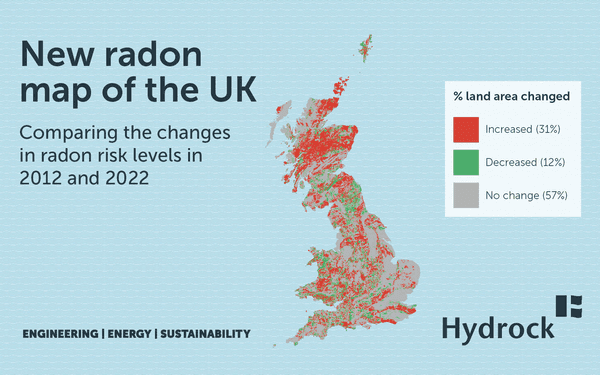
Together, the London Boroughs and major developers are now inextricably linked in a commitment to improve air quality across the capital.
The Environment Act 2021 announced a requirement for new legally binding air quality targets for particulate matter, while the London Plan 2021 demands an air quality positive approach be taken for major developments. Together, these requirements show progress that London's air quality will be taken seriously for the benefit of the health of all communities.
The key to a cleaner and healthier future lies in the approach to measuring air quality, the identification of hotspots, and an ability to design for a positive outcome.
Understanding PM2.5
Health professionals have turned their attention to the impact of small particulate matter on the human body.
These fine particles, PM2.5, are around us all the time. Once taken into the body their accumulation can have serious health consequences as outlined in the most recent Imperial College London research report [1] issued April 17, 2023 for studying the impacts of air pollution on human health. The report looks at more than 35,000 cases over 10 years and indicates there is no threshold below which PM2.5 exposure poses no harm to human health.
Construction dust, combustion activities such as the use of wood burners, and residue from vehicle tyre wear - even from climate conscious electric vehicles - are just some of the typical day-to-day activities generating PM2.5.
The Environment Act 2021 has set new target limits on PM2.5 for local authorities to meet across their jurisdictions. Currently the objective is set at an annual mean concentration of 20 micrograms per cubic metre. Under the new Environment Act 2021, local authorities will need to meet an annual mean concentration target limit of 10 micrograms per cubic metre by 2040, with a non-binding interim target of 12 micrograms per cubic metre by 2028. Although these targets are above the World Health Organisation recommended annual air quality guideline value of 5 micrograms per cubic metre, they are a step in the right direction.
For every London borough, the challenge is to identify where the PM2.5 hotspots are.
London boroughs set to invest in air quality sensors
To meet these new air quality targets, all London boroughs need to invest more widely in air quality sensors to identify hotspots of PM2.5.
Historically PM2.5 monitoring has been limited as investment has been in large, immobile, expensive, but accurate sensors. While this method has its advantages boroughs such as Hounslow and Islington are now leading the way with a commitment to a more pragmatic, lower-cost network of sensors to provide a wider area of coverage for PM2.5 monitoring. Whilst the accuracy of each individual monitor is slightly less, the picture painted by having so many of them is far more valuable from a real-time data perspective and can then lead to more detailed analysis to inform strategies to improve air quality.
DEFRA funding is available to support the London boroughs invest in this broader, more agile form of air quality monitoring which will ultimately help reduce PM2.5 exposure.
London Plan - air quality positive guidance
Many developers working in London also need to make commitments to meet air quality standards.
Every new development in London that requires an environmental impact assessment as part of its planning submission, must also provide a statement on how it will be air quality positive to the benefit of its surrounding community.
This positive move, detailed in the London Plan, signals a future direction of travel for all development and dovetails with the requirements of each London borough to reduce PM2.5.
The commitment to an air quality positive statement will help drive thinking about the underlying sustainability principles of a major masterplan development.
Air Quality Positive brings a focus at the early masterplan stage to the overall layout of a site, for example locating more sensitive uses such as schools or housing in the least polluted areas. It also encourages deeper thought around the inclusion of green spaces, the use of sustainable forms of transport, segregation of cycle routes, and the way heat and energy is provided to the surrounding area.
There are no thresholds, instead to meet planning regulations, design teams need to evidence how air quality has been considered holistically and how the proposal maximises benefits to air quality.
For development teams, it places real importance on understanding what can impact air quality at each stage of the development process. Being able to monitor and interpret air quality data, and demonstrate and report that high standards are being achieved is of critical importance to delivering a responsible approach to future development.
Between the London Plan and the Environment Act, there is now momentum to get a positive grip on improving London's air quality with respect to PM2.5.
[1] Imperial College London Environmental Research Group, April 2023: "Impacts of Air Pollution Across the Life Course - Evidence Highlight Note"













